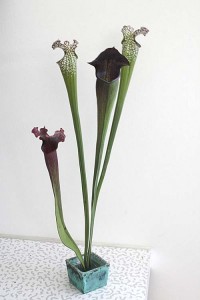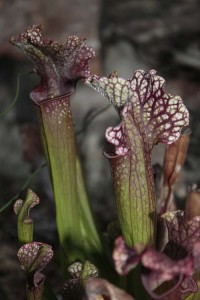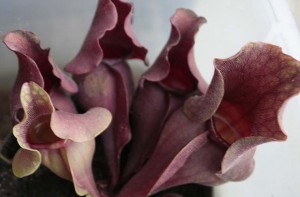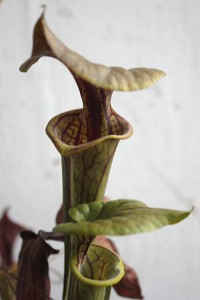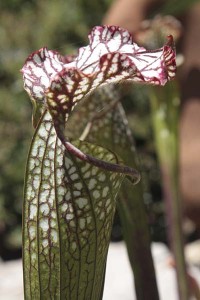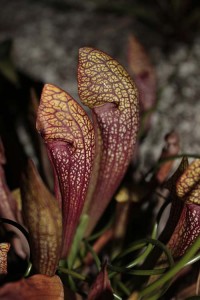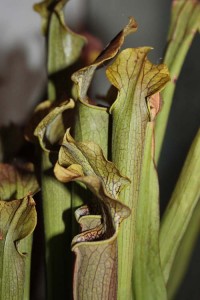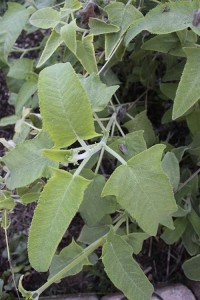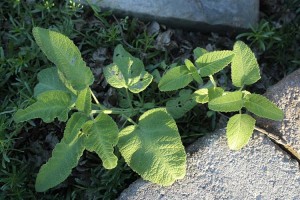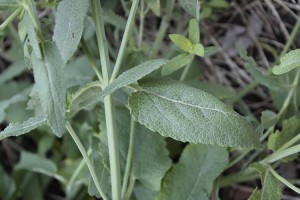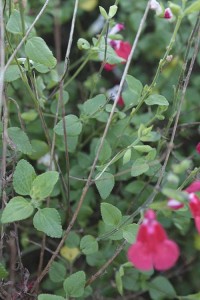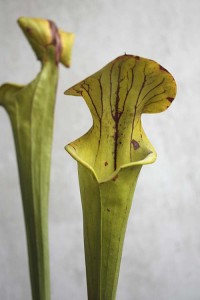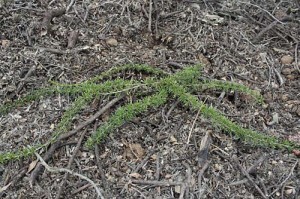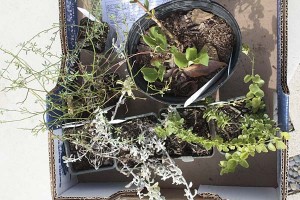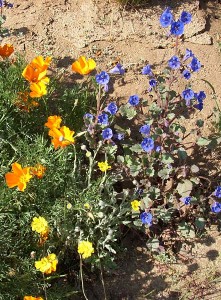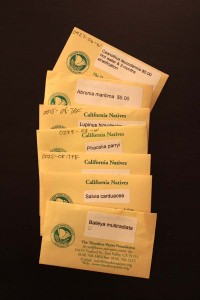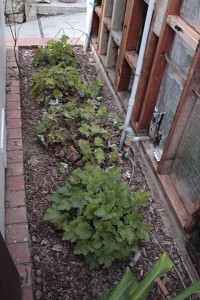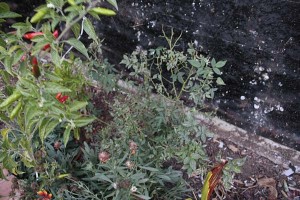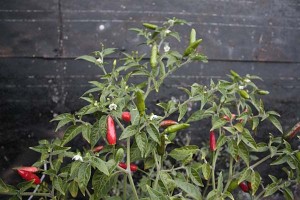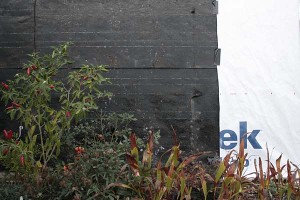Last spring’s trip to the Santa Ysabel Preserve introduced me to chaparral whitethorn in full bloom. This plant, Ceanothus leucodermis, has a reputation for being a touchy garden subject. But seeing its pale blue flowers set off against a plant with glowing white bark made me want to see if I might be able to grow it where I live, two thousand feet lower in elevation and much nearer the coast.
I was intrigued when the Theodore Payne seed listing offered it. One seed packet might give me several plants to try for not too much expense. Maybe one of the plants would end up in the spot in the garden that would make it happy.

The first challenge you face when a packet of seeds arrive is to get them to germinate. I was afraid that a plant that’s hard to grow might also be difficult to germinate, so I went to Dara Emory’s handy resource, Seed Propagation of California Native Plants for assistance. There she recommends two special treatments for the seed: boiling water treatment, followed by 1-3 months of stratification. But there was a sentence that made the process sound easier than that: “Hot water only may give satisfactory germination.”
The tinkerer in me took that as an opportunity to conduct another little garden experiment. I divided the seeds into three lots. Most went right back into the packet they came it–It was way too many seeds for me to contemplate dealing with, even if the germination rate was spotty.
I poured a small quantity of rapidly boiling water on the other two seed batches. Dousing with boiling water ordinarily would kill many living things. The first time you do it with seeds, it’s an act that you carry out trusting those who went before you, even as the act itself seems counterintuitive and reckless.
The ceanothus seeds made strange crackling noises when the hot water hit. They have incredibly hard seed coverings, so the crackling was the sound of the seed coats being breached. I let the water cool, and then placed most of the experimental subjects in moist peat moss, and wrapped them up in a ziploc bag for some hibernation in the veggie crisper drawer of the fridge. I saved out nine seeds which escaped the refrigerator treatment. Those went straight into seedling mix in pots that I kept watered on the floor of my unheated greenhouse, which is pretty close to being placed in a a bright spot outdoors.
That was August 1, and within 3 weeks I was beginning to see sprouting seeds. Considering that I could probably make space for three or so plants, this definitely constituted “satisfactory germination.”
I guess I was so happy with the seeds that didn’t receive cold treatment that I forgot about the seeds in the fridge. When I finally checked on them a month ago practically every seed had sprouted and was showing long green seed leaves reaching for a sun that didn’t exist in the refrigerator.
Now with all these seedlings I’m feeling like I’m running a botanical puppy mill. What will I do with all these plants? Of course, I doubt all of them will survive. (What culture was it where children were only named after they had reached their first birthday?) But there will be a few more plants than I’ll need.
Well, I suppose I could donate the spares to next year’s native plant society’s sale–but that’s not until October of 2010. And I could see if any of the members might be interested in swapping for some of their own spare plants hat I’d be interested in…



